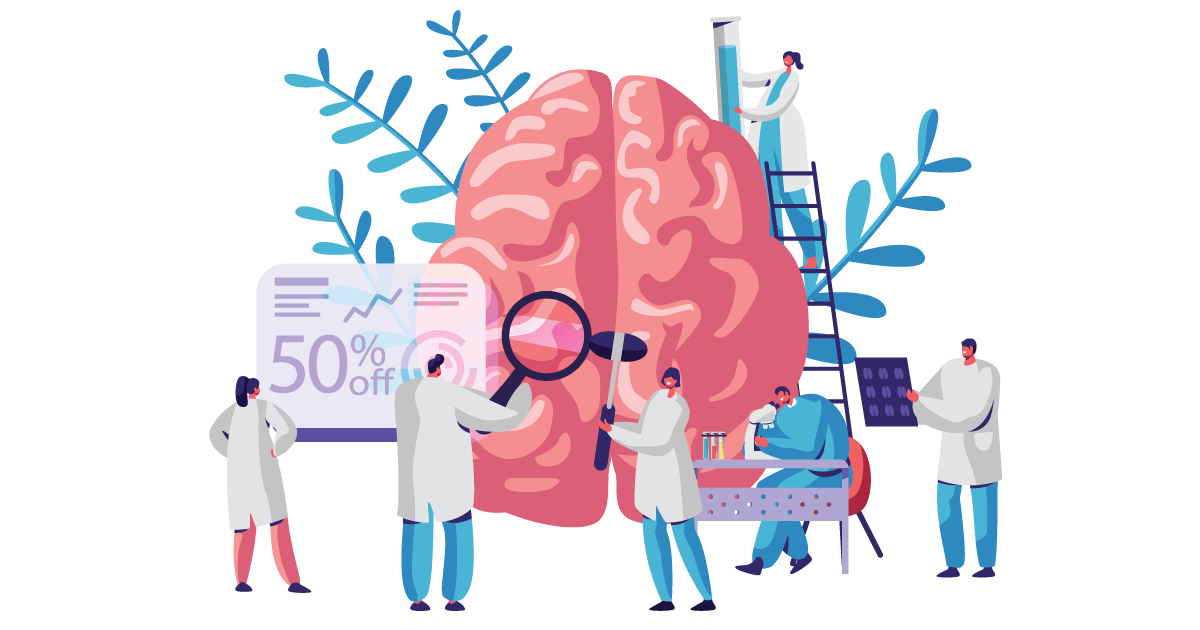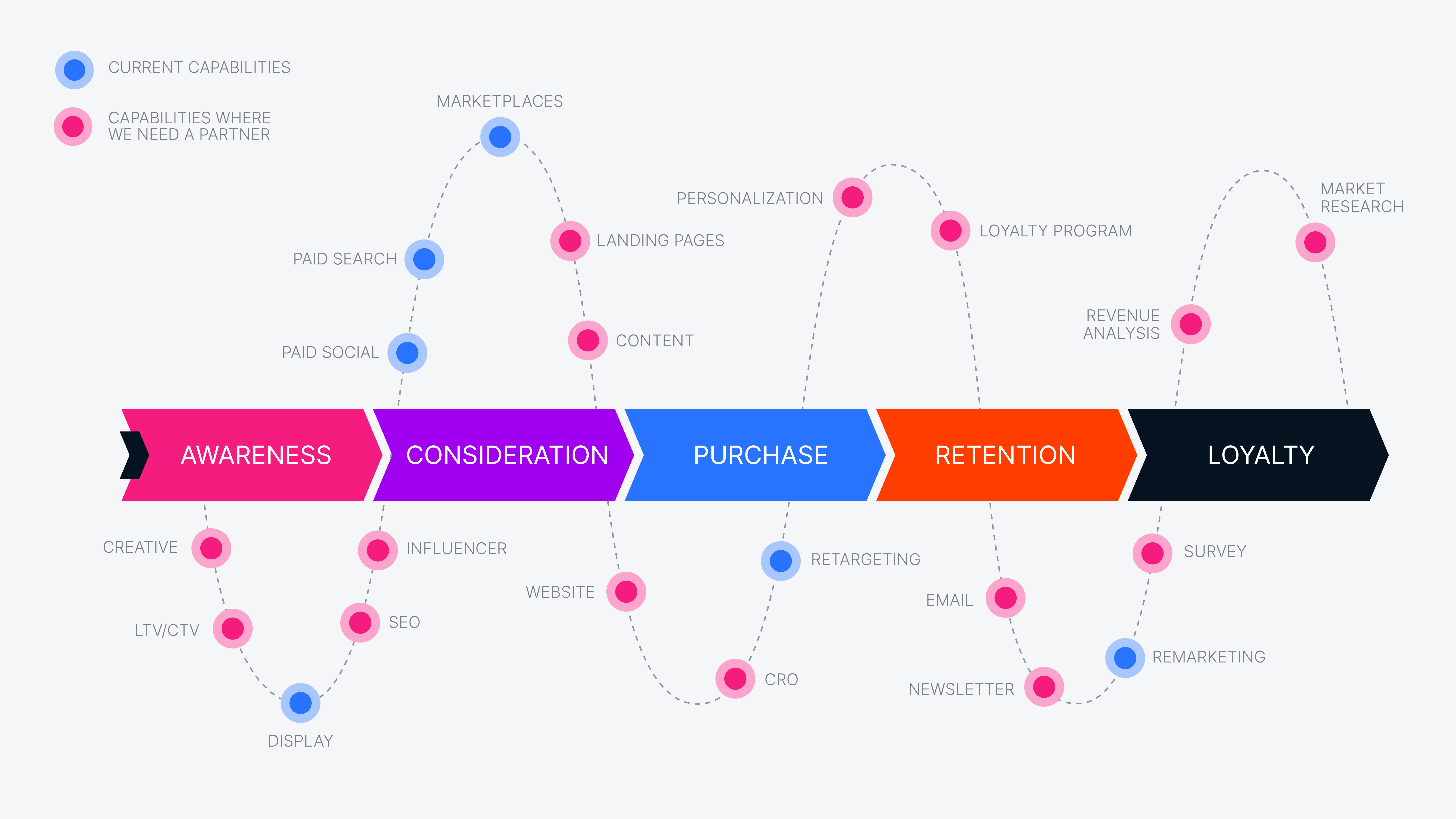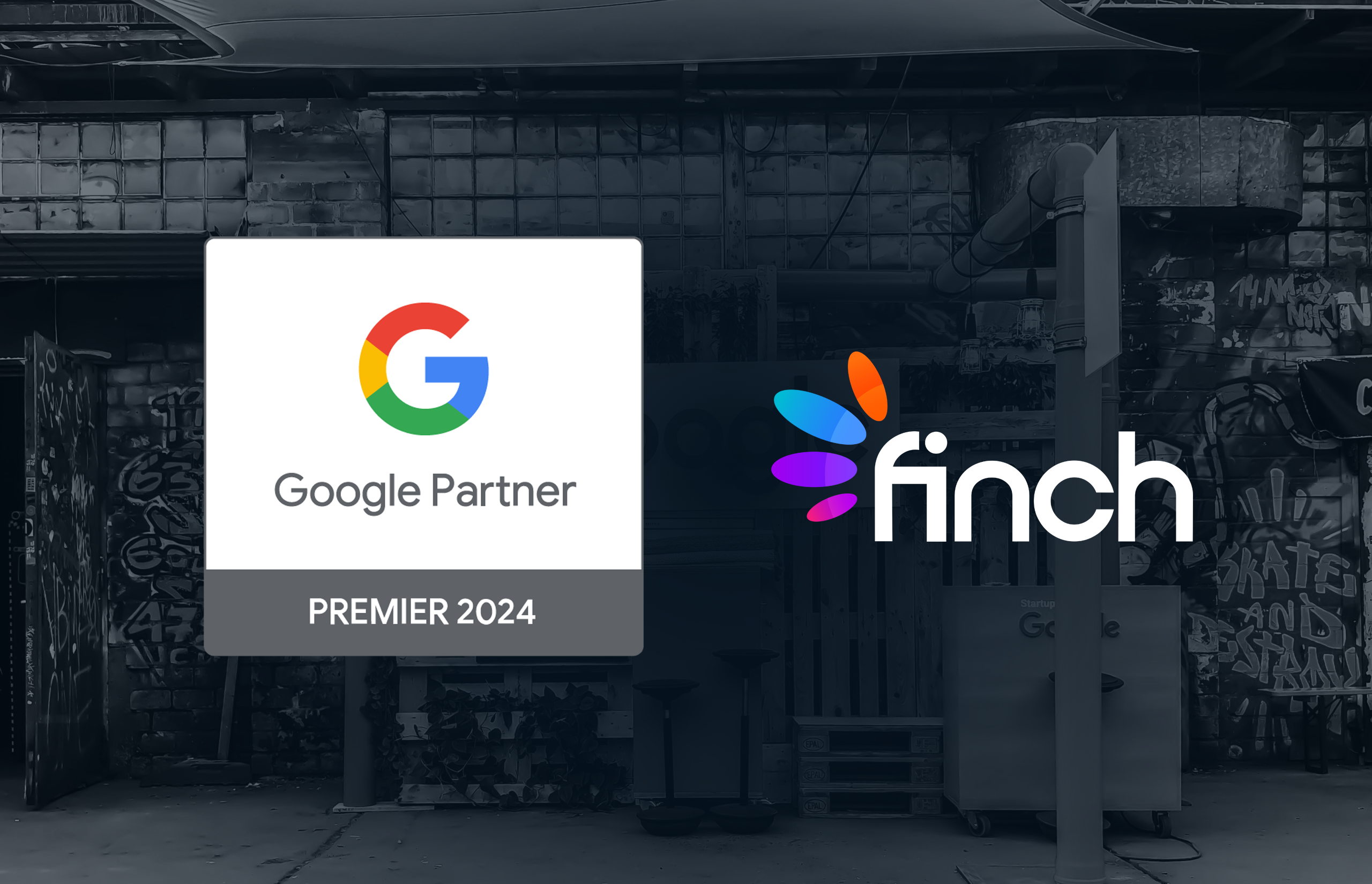For eCommerce companies, having an effective promotions approach is a way to increase sales. And a way to pull off more effective promotions is to understand the psychology of buyers’ thinking. It’s about both what types of sales your customers prefer and the underlying basic psychological patterns that drive consumer behavior and perceptions.
In the “Recharge Your Approach to eCommerce Promotions” webinar, Finch covered ways to understand your buyers’ psychology for eCommerce promotions. In this post, I reiterate what we shared in the webinar and expand on the topic.
The Psychology of Marketing
Verywellmind.com describes psychology as “the biological influences, social pressures, and environmental factors that affect how people think, act, and feel.”
So buyer psychology can be defined as “the biological influences, social pressures, and environmental factors that affect how people think, act, and feel when buying things.”
Psychology isn’t new to marketing. It’s integral to it. To effectively sell something to anyone, we need to know more than the person’s sex, age, and location. We need to know what matters to the person and what they value. What causes them pain and why and what they need — or think they need — to end that pain. That’s psychology.
Basic Human Psychology Is at Play in Marketing Every Day

Basic human psychology comes into play in marketing all the time and whether the seller is aware of it or not. A good example of psychology in marketing is prices that end in “.99.”
The psychology behind a $49.99 price compared to $50.00 comes down to western cultures reading from left to right and the left-digit effect. Humans are wired to perceive the left-most digit more than the right-most digit when looking at pricing. So even though $49.99 is just one cent less than $50.00, our brains see it as comparing $40 to $50.
The left-digit effect is just one basic psychological principle that affects marketing and promotions. Let’s examine some specific ones you can use in your eCommerce promotions.
Psychological Principles for eCommerce Promotions
You can use buyer psychology to improve your promotions. Similarly, failing to understand and consider buyer psychology can hurt your eCommerce promotions.
Beneficial Psychology for eCommerce Promotions
Perceived Value
Studies have shown that consumers are more likely to have a favorable perception of a deal when they can calculate the discount accurately and easily. In other words, they can quickly understand the value of the deal.
How do you use that to your advantage in a promotion?
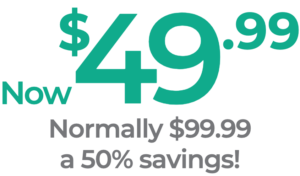
You help your prospective buyer quickly calculate the discount accurately. You can do that by showing a price comparison rather than just the discounted amount. So instead of just “save 25%,” show the normal price with a slash through it and show the sale price. You can even add “a 25% savings!” or similar language to reinforce the value of the discount.
An example given on volusion.com drives this point home. Read the following and pick the one that has the most value.
- $200 off a $999 television
- A $35 pair of sunglasses, marked down from $50
- Buy one shirt for $60, get the second for 50% off
Number 2 is the best deal with a full 30% savings. Not all consumers will get that though.
And there are times when not making the discount obvious can be to your advantage. For example, if you can only offer item 3 above, most people will zero in on the 50% off and think the offer’s great. But, in reality, the consumer is only saving 25% on both items.
Reciprocity
People are naturally inclined to do something for someone who does something for them. Known as reciprocity, “giving back” can be in the form of a behavior, gift, or service. Reciprocity applies to all aspects of life, including promotions.
Reciprocity is also cumulative. Giving something away creates a psychology of indebtedness where your recipient is more and more likely to give back down the road.
You can use reciprocity in your promotions or as an ongoing tactic. By offering shoppers something of value, many will feel compelled to return the favor by making a purchase. It’s about “giving to get” even if getting is really given to someone else — think smile.amazon.com.

Examples of reciprocity include:
- Coupons
- Free samples. The Republic of Tea does this by including a free tea bag in each catalog it ships.
- Special notes in orders or high-end packaging. Novica orders from the Andes region include a note from the artist, are gift-wrapped, and include a worry doll.
- Free guides, music, gift cards, and webinars available to shoppers, even if they don’t buy anything. Blogs are also a form of reciprocity marketing.
- Discounts for subscription and autoship programs or in exchange for an email or phone number.
- Free shipping.
- Free trials or virtual or actual “try before you buy” options.
Reciprocity is strongest when you first offer something to your prospective buyer, but it’s also the key psychology in loyalty programs where you reward shoppers for ongoing purchases.
Exclusivity and Scarcity

Exclusivity and scarcity are types of persuasion psychology. Both play on the psychology of the fear of missing out or FOMO and/or rarity. Exclusivity adds the psychology of wanting to belong or be important to FOMO and/or rarity.
When a shopper has access to an exclusive offer or item, he/she joins an elite group or community.
Exclusivity in your eCommerce promotions is a great way to give meaning to your promotions. When you tell your shopper why he/she gets a discount or special offer, you can overcome a sense of entitlement to an offer and create a sense of belonging instead.
Scarcity is closely tied to exclusivity. FOMO is at work with both and both create and play on a shopper’s sense of urgency. A common scarcity tactic is “only x left in stock” or “offer ends soon.” Classic scarcity promotions are Black Friday and Cyber Monday.
In the shopper’s mind, increased rarity creates increased value, which drives an increased likelihood to act.
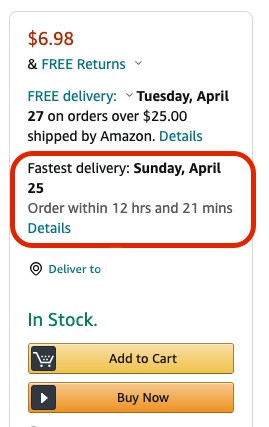
Examples of scarcity, exclusivity, and urgency in promotions include:
- Limited-time or ending soon
- Limited quantities or availability
- Flash sales or deal(s) of the day
- Rewards programs with set membership requirements
- Wait lists, buy it first, and pre-order opportunities
- Just for you promotions targeted at a select segment of your target market
- Amazon’s use of telling people how much time is left to receive their order on a given day
- Clearance sales
- Anniversary sales
Social Proof or Influence
Social proof or the “me too” effect is when people value something if others value it first or too — especially others perceived as important or credible. It’s the principle behind product reviews and influencer marketing.
Examples of using social proof in promotions include:
- Including a products’ or your company’s rating (number of stars) in your promotion
- Using “best seller,” “most popular,” or “customer favorite” in promotions
- Including customer or celebrity testimonials, reviews, or endorsements in your promotion
- Using “x sold” or “used by x people”
- Encouraging shoppers to share your promotion on social media
- Using “as seen in” mentions
Buyer Psychology that Can Hurt Your eCommerce Promotions
Buyer psychology can also hurt your eCommerce promotions when you fail to consider it.
Perceived Quality
Shoppers perceive an item to have a higher value when it sells for a higher price than a similar item. Shoppers also perceive that highly discounted products are lower quality. This is the psychological principle of perceived quality.
Because of perceived quality, frequent discounts can lower your shopper’s perception of the quality of your goods or individual products. Your customers may think you make so much profit off your normal prices that you can afford to discount everything all the time.
Rather than always discounting the same products, choose your strategy carefully and consider other types of promotions to protect your customers’ perception of the quality of your goods. And try and tie exclusivity or scarcity into your discounts to protect your consumer’s perception of quality.
Giving a reason for your discounts also helps protect your buyer’s perception of the quality of your goods. Whether you’re passing on a special price you arranged with the manufacturer or are having a clearance, tell the customer why you’re lowering the price.
Classical Conditioning
Frequent or constant discounts can hurt your brand unless your model is as an outlet or discount store, such as Overstock.com. That’s because of the classical conditioning psychological principle.
Classical conditioning is most commonly known as Pavlov’s dog or Pavlovian conditioning. The concept is that repeat exposure to something creates a conditioned response.
With promotions, particularly discount promotions, classical conditioning can hurt your efforts when you run offers too frequently and train your customers to wait for promotions before they buy from you.
Bottom Line on Psychology in eCommerce Promotions
As you plan your eCommerce promotions and build audiences for your campaigns, go beyond customers’ demographics and think about buyer psychology. When you do, you can use buyer psychology to get the highest return on your promotions as well as your promotions to promote your promotion.
And always A/B test everything to learn what unique psychologies most drive your ideal buyer.
If you want help creating a long-term growth strategy for your eCommerce business and managing your paid advertising, contact Finch.

